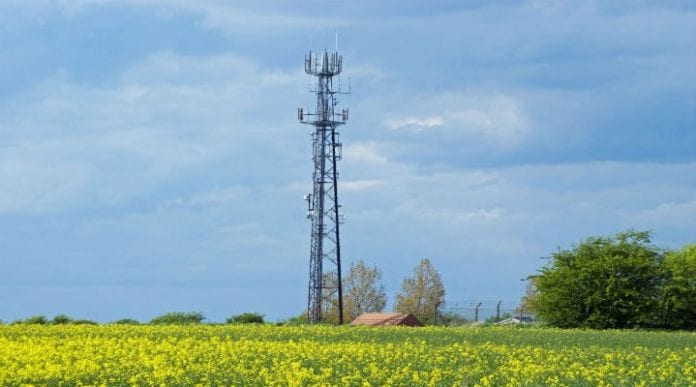Improving rural broadband access is an issue getting renewed attention from government and the telecom industry.
While about 10% of the total American population doesn’t have access to broadband speeds between 3 and 25 megabits per second, that figure rises to 40% of the population in rural America, according to the 2016 Broadband Progress Report. There are about 34 million Americans without broadband access, and 23 million of them reside in rural areas.
There are a number of efforts that have been kicked off this year. Microsoft has been involved in a lengthy pilot program in rural Virginia to provide wireless broadband access, utilizing the TV white spaces in conjunction with local wireless internet service provider wireless internet service provider B2X Online. The network relies on white space equipment from Adaptrum that consists of base stations on towers or near schools equipped with fiber connections, and radios installed in students’ homes; the technology has a reach of home up to four miles away from the base station, according to a spokesperson.
Microsoft has announced plans to launch 12 such networks in 12 states over the next 12 months as part of its broader initiative to improve internet access in rural areas in the U.S. and abroad.
Meanwhile, AT&T is building out fixed wireless service in rural areas as well, as part of its Connect America Fund commitment. The carrier launched fixed wireless service in eight new states in June and plans to serve more than 400,000 locations by the end of this year, and more than 1.1 million locations by 2020.
Still, rural coverage is a conundrum. Customers often want service, but the lower population density often makes return on investment an unattractive proposition for expensive infrastructure build-outs. Government incentives have often helped with financial incentives and service support to get carriers to build out in rural areas, with projects such as its Mobility Fund and the new Mobility Fund II effort.
“Despite [Mobility Fund] support and extensive 4G LTE deployment by industry, approximately 575,000 square miles either still lacks access to 4G LTE service or only has 4G LTE coverage because of universal service support,” the Federal Communications Commission said in February, when it announced its Mobility Fund II rules in February. Mobility Fund II is to provide $453 million in universal service support to encourage operators to expand or upgrade their wireless broadband operations in rural areas.
Mike Milligan, senior director at content delivery network Limelight Networks, noted a number of trends that are fueling the desire for better rural coverage: more companies are relying on a workforce that is mobile or telecommutes in order to reduce operating costs. More applications are cloud-based rather than drawing from on-site computing resources. And in general, people just need broadband internet in order to work or job-hunt, to do school work, pay bills and participate in modern life. Milligan said that fixed wireless as a service delivery strategy is likely to become more important in rural areas.
“There are so many ways that people can use technology and information to be more productive,” Milligan said.
He said that Limelight, which peers with more than 900 internet service providers and last-mile networks, can see significant differences between the networks in urban and suburban areas versus those in rural areas: less bandwidth available, and less consistency in the quality of service that enables smooth content delivery. While non-real-time content may simply be slower to load, real-time content like video is more sensitive to changes in network bandwidth and latency over time. “It’s important to not just assume that you’re always going to have the consistent speed, bandwidth and latency,” Milligan said, and to account for those changes in content delivery.
Broadband access that enables good customer experience, he added, “is almost like a utility … almost that important in the lives of people to give them the opportunities they need to be successful.”

